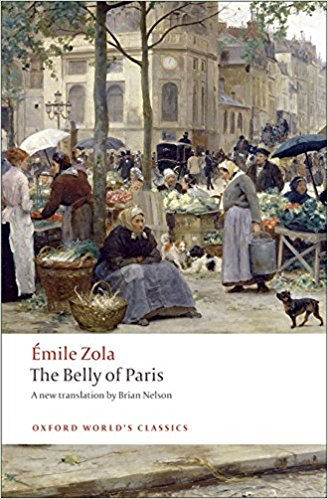|
The Belly of Paris
by Emile Zola (Oxford World's Classics)
The Belly of Paris (Oxford World's Classics) by Emile Zola
Émile Zola (1840-1902) was a great figure in 19th Century French literature, twice nominated for the Nobel Prize. He is famous for his defense of French army officer Alfred Dreyfus, who was falsely accused of treason by other French army officers covering for the actual traitor. Zola was a champion of the lower, working classes, and may have been murdered by agents of the wealthy oligarchy when he died suspiciously at age 62. In this novel, the deportation of the hero to Devil's Island eerilie prefigures Captain Dreyfus' unjust imprisonment in that living hell, located on an island off the coast of French Guyana, South America.
Unjustly deported to Devil's Island following Louis-Napoleon's coup-d'état in December 1851, Florent Quenu escapes and returns to Paris. He finds the city changed beyond recognition. The old Marché des Innocents has been knocked down as part of Haussmann's grand program of urban reconstruction, replaced by Les Halles, the spectacular new food markets. Disgusted by a bourgeois society whose devotion to food is inseparable from its devotion to the Government, Florent attempts an insurrection. Les Halles, apocalyptic and destructive, play an active role in Zola's picture of a world in which food and the injustice of society are inextricably linked.
This is the first English translation in fifty years of Le Ventre de Paris (The Belly of Paris). The third in Zola's great cycle, Les Rougon-Macquart, it is as enthralling as Germinal, Thérèse Raquin, and the other novels in the series. Its focus on the great Paris food hall, Les Halles--combined with Zola's famous impressionist descriptions of food--make this a particularly memorable novel. Brian Nelson's lively translation captures the spirit of Zola's world and his Introduction illuminates the use of food in the novel to represent social class, social attitudes, political conflicts, and other aspect of the culture of the time. The bibliography and notes ensure that this is the most critically up-to-date edition of the novel in print.

|
 
|

